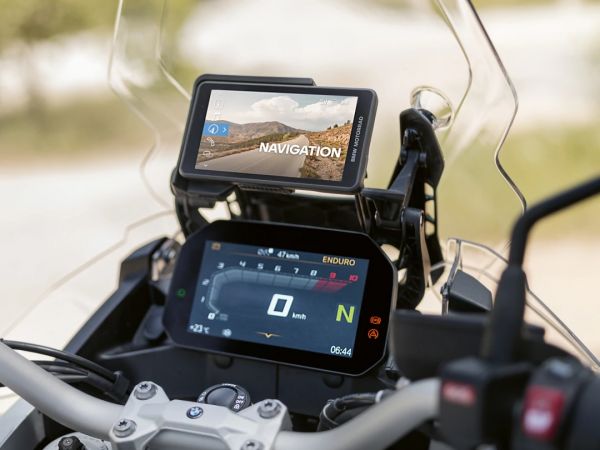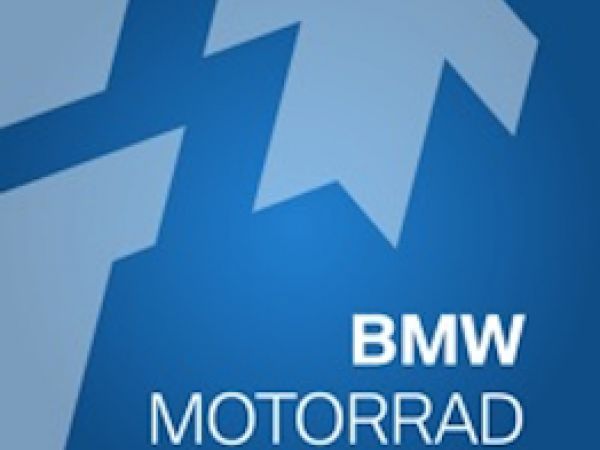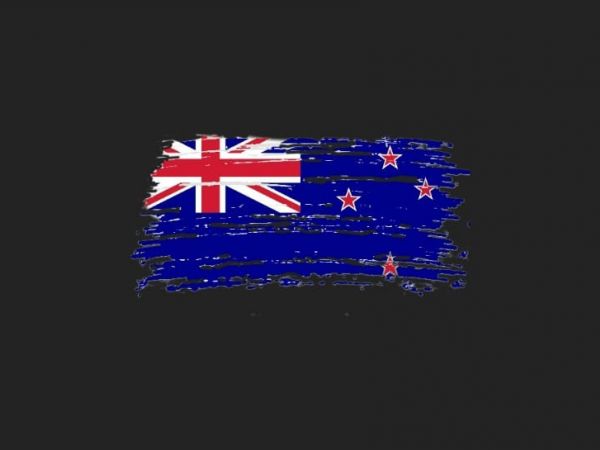Traffic regulations in Europe - Slovenia
Traffic regulations in Europe - Slovenia
Kategorija: Prometni propisi u Europi
What should be considered on a motorcycle tour to or through Slovenia? What documents do you need to bring with you? MotoGS WorldTours and MotoGS Rental provide you with answers to your most important questions.
Errors and omissions excepted - all information without guarantee.
Basics:
Slovenia is a member state of the EU and introduced the EURO as official means of payment on January 1st, 2007. Therefore, it makes entry very easy for all EU citizens. But even for non-EU citizens, the entry option is usually very uncomplicated.
Vehicle papers and other necessary documents:
The vehicle registration document or the registration certificate part I is mandatory.
The IVK - International Insurance Card (formerly Green Card, including SLO) is valid as proof of liability insurance.
The EU driver's license is accepted in Slovenia, so no international driver's license needs to be carried along as well. For non-EU citizens, an international driving license is required in addition to the national driving license of the country of origin.
EU citizens can enter the Republic of Slovenia with a valid identity card, regardless of the reason or intention of their entry or stay in the Republic of Slovenia. Although a driver's license is not a document that allows an EU citizen to enter the Republic of Slovenia, it can serves as proof of identity.
Persons who intend to stay on the territory of the Republic of Slovenia for more than three months must register with the administrative unit responsible for their place of residence before the end of this period.
Non-EU citizens:
Foreign citizens who, by law, do not require a permit to enter the country may stay in the Republic of Slovenia or the Schengen area up to 90 days in a time frame of 6 months, provided they are in possession of a valid travel document. The legal order of the EU includes a list of third countries whose nationals require a visa when entering the EU's external borders and of countries whose nationals are exempt from this requirement. In the first case, in order to enter the Republic of Slovenia, a foreign citizen must present not only a valid travel document, but also a visa or a residence permit, unless otherwise provided by law.
Therefore, it makes sense for non-EU citizens to find out about the entry requirements for their respective home country for Slovenia on the following website "VisaHQ". This is for your own safety.
All personal documents must be valid for at least 3 months upon departure.
With a rented motorcycle to or through Slovenia:
Basically not a problem, but riders who make journeys to or through Slovenia with a vehicle that is not registered in their name must have a usage permit from their rental company with them to be on the safe side. You can also download this permit as a template from the following link.
The legal minimum driving age for general motor vehicles in Slovenia is 18 years. The same applies if you want to rent a motorcycle in Slovenia. As a rule, however, the local rental stations require mostly a minimum age of 21 or even 23 years. Young rider surcharges are often required for riders under the age of 23.
Health insurance:
In principle, all travelers to Slovenia or in general to the Balkan countries, regardless of their country of origin, should take out international health insurance. This can also be done easily here via Global Rescue. Surely this type of insurance protection is a bit more expensive than other providers. However, as the name suggests, this type of coverage is built on Rescue. Therefore not comparable. However, this should not be understood as advertising, it is a simple recommendation.
Helmet obligation
Helmets are compulsory! Only helmets that comply with ECE standard 22 are permitted.
First aid kit / warning vests:
It is mandatory to carry a high-visibility vest, but it is not mandatory to carry a First Aid Kit. Carrying a First Aid Kit, however, is always advisable, just in case. Also a motorcycle warning triangle and a small warning light.
Lighting:
Outside of built-up areas, dipped headlights (or alternatively daytime running lights) must be used all year round during the day. This regulation also applies to journeys within built-up areas.
Carrying a spare bulb set is compulsory. Excluded are motorcycles equipped with LED lights.
Speed limits in Slovenia:
In urban areas: 50 km/h
Out of town: 90 km/h
Expressways: 110 km/h
Motorways: 130 km/h (toll obligation with e-vignette)
Alcohol limit:
The general traffic regulations in Slovenia also determine the blood alcohol level with which riders are still allowed to ride a motorcycle. The blood alcohol limit is 0.5‰. Exceptions are novice drivers (less than two years in possession of the driving license) and riders under the age of 21. The limit of 0.0‰ applies to them. That means, NO alcohol may be detected in the blood at all.
Environmental zone:
A restriction on the use of motor vehicles of any kind by a possible environmental zone is not known and, according to official information, is not planned in the future.
Tired of tolls on motorways, tunnels and bridges.
Since the beginning of 2022, Slovenia has also switched its toll to the e-vignette - a digital vignette system and replaces the previous adhesive vignette. In principle, all expressways and motorways in Slovenia are subject to tolls ( tunnel) or vignettes. In addition, many roads have been converted into motorways in recent years, so that there are hardly any expressways left.
This e-vignette is required to ride on Slovenian motorways and expressways. The e-vignette is linked to the car or motorcycle registration number. When purchasing, make sure you enter the correct motorcycle license plate number, the country of registration and the right toll class correctly. If this is not correct, the toll is deemed not to have been paid.
The annoying stopping and paying at the toll booths will not remain anymore.
In contrast to Austria, the e-vignettes in Slovenia are relatively expensive, but the price has remained very stable in recent years and there are hardly any special tolls to be paid.
You can buy the e-vignette in advance from ADAC (Germany) or from the ÖAMTC (Austria). Another option is to purchase the e-vignette online from the DARS online shop (Slovenia) or from Toll Tickets (generally for Europe).
Pay Attention:
It is not possible to buy online e-vignettes with immediate validity by means of an offer. In this case, the first possible date for the electronic vignette to come into effect is four working days from the creation of the offer, since the e-vignette can only become valid when DARS receives the payment on the account and connects it to the offer. In this case, the e-vignette will become valid on the day specified by the customer in the purchase process and the customer can access the invoice and the e-vignette purchase confirmation via their user account in the online shop.
The e-vignette can be purchased a maximum of 30 days before the first day of validity.
A much better solution is to simply buy the e-vignette locally, since in Germany near the Austrian border as well as in Austria at almost all petrol stations, at Dars sales points, the DarsGo Servis or at authorized e-vignette sales points , the e-vignette can be purchased. In Croatia you can also buy the e-vignette at petrol stations such as Petrol and OMV.
But please keep the invoice, because it may have to be shown during an inspection.
Toll Karawanken-Tunnel (special toll):
The Karawanken-Tunnel, which connects Slovenia with Austria, is the longest road tunnel in the Republic of Slovenia at 7864 meters. The tunnel is exempt from the e-vignette toll. However, this also means that use with a motorcycles, must be paid for separately.
The additional special toll for motorcycles is EUR 7.50.
The Karawanken-Tunnel, in direction to the south, is tolled by the Austrian ASFINAG. Towards the north, the Karawanken-Tunnel at the Hrušica toll booth is subject to toll collection by the Slovenian motorway company DARS.
Pay Attention: The toll for the route in the north direction can only be paid locally at the toll station in Slovenia. After payment you will receive a ticket.
Only when riding south - from Austria to Slovenia, the Karawanken-Tunnel can be paid for or purchased online in advance via ASFINAG (video toll). It should be noted, however, that this is only valid 18 days after purchase (14 days right of exchange + 4 days processing time), since consumer protection grants a 14-day right of exchange.
Here, too, it may make more sense to pay this special toll directly on site. After payment you will receive a ticket.
How do I mount my e-vignette on my motorcycle?
The monthly and 7-day e-vignette replaces the "adhesive vignette" (sticker) and is a digital vignette linked to the license plate number. It is checked using cameras on the Slovenian motorway network and in toll enforcement vehicles. It is therefore no longer necessary to stick an adhesive vignette on the motorbike and scrape it off after yoir trip.
Penalties and controls in Slovenia:
In summary: There are many and very strict controls.
In Slovenia, the vignette obligation is very carefully and precisely controlled, which is why you should not risk high penalties.
Riding without an e-vignette is heavily penalized in Slovenia. The amount of the penalties cannot be specified precisely, as these are determined individually by the responsible authorities. The range from EUR 300 to EUR 800 is mentioned, but at least this can be reduced by half if you pay within a week.
If an offense is not detected by an automatic check but by an identity check and you cannot pay the fine in cash on the spot, the authorities will keep your ID or passport, driver's license and motorcycle registration document until the fine is paid . From a legal point of view, the documents may even be retained for up to 6 months.
Since the lack of identity documents, driver's license or registration certificate when entering neighboring countries can become a major and very time-consuming problem, you should not take this risk under any circumstances. So, be careful.
The Slovenian Motorway Company, DARS, as well as customs and the police regularly carry out spot checks and inspections on the motorways.
A popular checkpoint are the roundabouts leading to the motorway entrances, for example the roundabout in Maribor, which officially require a e-vignette, but many road users are not even aware of this.
In addition to these personal checks, there are also automatic video checks at each toll booth that is passed through.
Again, a real motorcyclist tries as best as possible to avoid all motorways and expressways, especially if they are also subject to tolls.
Correct behavior in the event of an accident or breakdown:
In some countries, including Slovenia, it is important to call the police even in the case of "minor damage", because the police protocol is the basis for the settlement of the damage. Vehicles with noticeable body damage may only leave the country with a police confirmation of damage.
It is therefore highly advisable to prepare the "European Accident Report" damage report.
If people are injured, it is all the more obligatory to call the police. The disadvantage of this is that it can happen that your ID documents are confiscated until the court hearing, which makes it almost impossible for you to continue your journey or, depending on the situation, even to leave the country.
Vehicles with conspicuous previous bodywork damage should have a police confirmation of the previous damage already on arrival so that there are no unpleasant surprises when leaving the country later.
Fines – Peculiarities in Slovenian traffic:
Violations of traffic regulations can result in high fines or even imprisonment, depending on the severity of the violation.
- When overtaking, the signal must be used throughout the process. Column jumping is prohibited and this also applies to motorcyclists.
- Radar warning devices, the use and carrying of radar warning devices, including speed camera warning apps that are ready for use, are prohibited. Navigation systems with POI function are allowed.
- Curious, nobody is obliged to form a rescue lane. This is done on a voluntary basis.
Worth knowing about the catalog of fines:
If you exceed the speed limit by at least 20 km/h, then you are included from EUR 40.
Exceed the speed of more than 50 km/h, then you are included from EUR 1,200.
Can fines from Slovenia be enforced in Germany or in the rest of the EU?
Since Slovenia has been a member of the EU since 2004, the EU enforcement agreement also applies there.
Other rules certainly apply to non-EU citizens. However, since the payment is usually made on site, or even ID documents can be retained, this is of no help. Then it is simply a matter of following the traffic rules if you want to enjoy your holiday or tour. As simple as that.
Do the authorities give a discount for quick payment?
Yes, if you pay the fine directly on site, the claim is reduced.
Do you also have to buy a parking ticket for a motorcycle in short-term parking zones?
In Slovenia you have to take a parking ticket for all vehicles everywhere. The traffic wardens are on the lookout and punish any parking violations from the start.
Buses, especially school or children's buses, must not be passed when they stop to get on or off. Tempo 30 applies without restriction in front of schools.
Border controls between Croatia and Slovenia.
Croatia has not only been a member of the EU since January 1st, 2023, it is also a member state of the Schengen Agreement. Since then, border and passport controls have been eliminated when entering and leaving the country by land via the Slovenian-Croatian border. It is therefore no longer necessary to exclusively use the international border crossings.
Emergency numbers in Slovenia:
The emergency number for the police, fire brigade and rescue service is 112
As of 7/7/2023

TAGS
toll tickets toll karawanken-tunnel öamtc european accident report environmental zone slovenia emergency number in slovenia 112 e-vignette dars online shop adhesive vignette adacPodijeli svoje mišljenje
Podijeli svoja iskustva, pitanja ili prijedloge!
Komentari drugih motorista
Još nitko nije komentirao – što ti misliš?
Blog kategorije
Moto Ture

* Balkan-Italija Moto Avantura
Otprilike 3750 km!
14 dana putovanja kroz 5 zemalja!
15 noćenja + 2 noćenja na trajektu!

* Balkan-Karpati-Albanske Alpe Moto Avantura 2
Otprilike 5050 km!
21 dana putovanja kroz 7 zemalja!
26 noćenja!

* Balkan-Rumunjska Moto Avantura
Otprilike 3500 km!
11 dana putovanja kroz 5 zemalja!
12 noćenja!

* Balkan-Karpati-Albanske Alpe Moto Avantura 1
Otprilike 4055 km!
15 dana putovanja kroz 7 zemalja!
18 noćenja!

* Hrvatska-Italija-Francuska Moto Avantura
Otprilike 3550 km!
15 dana putovanja kroz 4 zemalja!
17 noćenja + 1 noćenje na trajektu!

* Hrvatska-Sicilija-Amalfijska Moto Avantura
Otprilike 4390 km!
18 dana putovanja kroz 3 zemalja + Sicilija !
20 noćenja + 1 noćenje na trajektu!

* Novi Zeland Moto Avantura
Otprilike 6650 km!
20 dana vožnje kroz Južne i Sjeverne otoke!
24 noći + 1 noć na kruzeru!

Croatia - Route des Grandes Alpes, July 2025
2 Americans - 1 boy and 1 girl, 1 motorcycle - a BMW R1250GS, one motorcycle tour and one goal ...

Balkans - Romania Tour, June 2025
At the end of June 2025, the time had finally come. Between June 23 and June 25, all participants in this tour gradually arrived in Trogir.

Balkans - Italy Tour, May 2025
Together we covered about 3700 km, crossing the Adriatic twice, from Durrës to Bari and from Ancona to Split.

Money protection in the event of insolvency
Money Protection Certificate according to § 651r and § 651w of the Civil Code of the Federal Republic of Germany ...

Packing list for a motorcycle tour
Pack your things and get going...

Travel planning and navigation
The next vacation is just around the corner, hopefully, and you've decided to finally ...

Riding a motorcycle in a group or alone?
Riding a motorcycle in a group or riding alone? Are you worried about safety, contact with other people ...

The International Driving Permit
Understanding the International Driving Permit (IDP). A Key to Smooth Overseas Riding for ...

BMW Motorcycle ConnectedRide Navigator
The new BMW Motorcycle ConnectedRide Navigator ...

BMW-ConnectedRide Cradle and Connected App
Riders of new BMW models have several options for using information and entertainment ...

Traffic regulations in Oceania - New Zealand
What should be considered on a motorcycle tour through New Zealand?

Traffic regulations in Oceania - Australia
What should be considered on a motorcycle tour through Australia?

